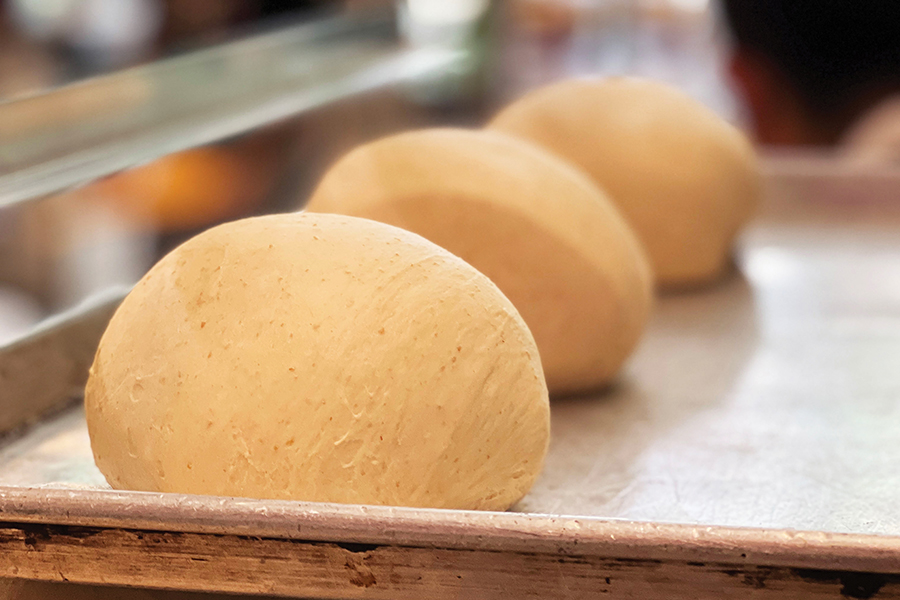How do your customers feel after eating your pizza?
Have you ever gone out to eat with the intention of going out afterwards for a night on the town but ended up sluggish and uncomfortable because of the food you ate? I have, and it has ruined my night on more than one occasion. In the U.S., pizza is a celebratory food. Growing up, it’s the food we eat at parties and gatherings. Pizza is the food we eat to celebrate big accomplishments with friends, but it is always shared. We cut it apart and eat slices as opposed to a whole pie. As kids, we have fast metabolisms and can run around, no problem, while simultaneously eating slice after slice. As adults, we stop ourselves at a few slices because of how it makes us feel and because of how our metabolisms have slowed down. We are taught to be a little more conscious of what we consume and how our bodies digest our food. We are taught to be “health conscious.”
In Italy, pizza culture is completely different. In Italy, pizza is not shared. Each person orders a whole, single pie for themselves. This may come off as excessive knowing what we do about American pizza culture, but if we take a closer look, it makes sense. Having had the privilege to be immersed in Italian culture and become close to a few Italian families over the years, I’ve learned Italians have an unconscious obsession with digestion. One of my all-time favorite things to do when in Italy is aperitivo. There is an entire culture devoted to just this one act that changes from north to south. But in essence, it is a pre-dinner drink and snack that is not just a time for socializing but is meant to prime the stomach for the coming meal. It is meant to get the digestive system moving so that when the main meal is introduced, it is easier to digest. After dinner, you are then presented with a digestif, an after-dinner drink. Digestifs are meant to help your body digest the meal you just consumed. Fernet-Branca is an amaro that was created in Milan in 1845. When it was originally invented, it was intended to be consumed as a cure-all for many things. It’s a beverage made up of 27 different herbs and ingredients and was originally meant to be medicinal. Although now it is a popular drink in the bar scene – especially in San Francisco – it remains a go-to option for upset stomachs.

Laura Meyer is owner of Pizzeria da Laura in Berkeley, California.
So, how is it in a culture obsessed with digestion that people are eating entire 12-inch pizzas by themselves? It comes down to a combination of proper fermentation and how the body digests food. Most whole pies you see in Italy are 12 inches or slightly bigger, and the dough weighs around 250 grams (8-9 ounces), compared to larger dough weights here in the U.S. But let’s get down to brass tacks here. What happens to our food when we eat?
Since pizza is primarily composed of carbohydrates with a smaller number of other ingredients on top, we’ll just focus on the dough. Inside our dough, alfa and beta amylase enzymes break down complex sugars into simple sugars. Carbohydrates are known as complex sugars because they are made up of three or more sugar molecules that form a long strand. These sugars are harder for your body to break down and digest. Simple sugars such as fruit are easier for your body to digest and break down. As adults, we start to hear more and more from our doctors to stay away from complex carbohydrates and to eat low-carb diets.
When we eat bread, digestion starts immediately. While we chew, the same alfa amylase that is found in fermentation is also found in our saliva. As our teeth are mashing and breaking down the food into smaller pieces, our saliva already has started breaking down complex sugars into simple sugars. This is just the beginning. If our saliva alone could do all the work, I’d be eating pizza every day. Unfortunately, that’s not the case. As soon as the bread passes into our stomach, the major breakdown of sugars happens. Some of the sugars go to our intestines and liver, but a lot of sugar ends up in our bloodstream. As our blood sugar rises, the pancreas produces insulin so the blood sugar can be stored as energy. Our bodies burn simple sugars the quickest and complex sugars more slowly. This is why athletes tend to load up on carbs before events (complex sugars are considered a slow-burn energy source). The body stores it and burns it off more slowly, sustaining them through intense activity. For athletes, carbohydrates are an effective tool. For the normal person, too many carbohydrates can complicate insulin production, resulting in diabetes and other health problems.
When it comes to pizza specifically, fiber is a big factor to consider. We cannot get rid of carbohydrates in pizza altogether, seeing as flour-based dough is the foundation. But if you are looking to create a dough that is “healthier” and more easily digestible, fiber is key. In flour, fiber is primarily located in the bran and the germ. Fiber is what makes us feel full for longer periods of time, and by using types of flour like “0” and “1 & 2,” the flour will contain more fiber. Although a very common pizza flour, type “00” has all of the bran and germ taken out of it. Combining flour with a higher bran and germ content with proper fermentation will result in a tasty pizza that is more easily digestible.
If the main thing your customers remember is how tasty your product is and not how uncomfortably full and sluggish they felt after eating, they are likely to come back more often. As Americans, we may not eat an entire pie every time we eat pizza, but it never hurts to have big dreams.
LAURA MEYER is owner of Pizzeria da Laura in Berkeley, California.



